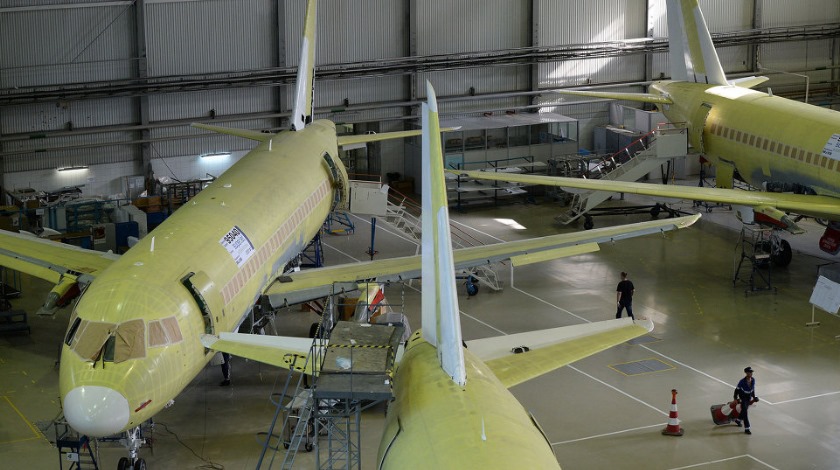Photo: Alexander Kryazhev
Reading Time: 2 minutesThe Russian government has decided to once again cut the budget of the federal program to develop the aviation industry in 2013-2025.
A decree signed by Prime Minister Dmitry Medvedev on March 31 reads that the amount of federal budget funding for the program will be reduced by 11.4%. from 714.2 billion rubles ($12.47 billion at the current exchange rate) to 632.6 billion. The program’s budget was first adjusted in 2014; the original figure had stood at 1.47 trillion rubles.
The previous version of the program called for some of the funding (277.5 million rubles) to be taken from extra-budgetary sources. No information is available so far as to whether this part of the program budget has also been amended.
The reduction in funding is part of the broader cuts to the federal budget for 2017 and for the projected period of 2018-19.
As per the previous version of the program, the aviation industry was to receive funding in the amount of 484 billion rubles within the remaining period of 2017 through 2025. Now the sum has shrunk by 17.1% to 401 billion rubles.
The program’s target indicators have also been revised. While initially the Russian aircraft manufacturers were expected to build a total of 298 civilian and military airframes through 2025, the updated version of the document sets a much higher target of 457 fixed-wing aircraft (up 53.4%), including 296 commercial airliners and 154 military, cargo, and specialized aircraft, as well as seven GA aircraft.
The target production figures for rotary-wing aircraft and aviation engines, for their part, have been significantly lowered: from 465 to 277 for the former (down 40.4%) and from 3,000 to 925 for the latter (down 62.2%).
The latest version of the program envisages that by 2025 Russian-made civilian and military aircraft will account for 4.5% and 8.3% of the global market respectively (against 3.2% and 10.9% in the previous version).
Russia is also to come to control 14.2% of the global rotorcraft market; the previous version had this indicator split into two categories, with 12% for civilian helicopters and 16.5% for military helicopters.
As for civilian and military powerplants, the share of Russian-made products is projected to reach 1.1 and 13.7% of the respective global markets (against 1.4 and 12.9% in the previous version of the document). The latest version introduces helicopter engines as a separate indicator, which should reach 11% of the global market.
Other newly introduced indicators include the share of Russian-made aircraft in the total fleet of the country’s major airlines. The government wants this figure to reach 27.2% by 2025, against 9% projected back in 2016.
The development program was amended based on amendments to the broader development strategy for Russia’s aviation sector through 2030, which is aimed, among other things, at increasing labor efficiency in the aircraft manufacturing industry and bringing the share of exported products to 40% or more.

